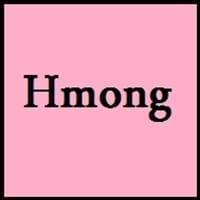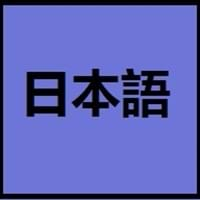Hmong vs Japanese
Countries
China, Laos, Thailand, United States of America, Vietnam
Japan
National Language
China, Gambia, Laos, Thailand, United States of America, Vietnam
Japan
Second Language
Not spoken in any of the countries, Republic of Brazil
Not spoken in any of the countries
Speaking Continents
Asia
Asia, Pacific
Minority Language
Not spoken in any of the countries
Palau
Regulated By
Not Available
Agency for Cultural Affairs (文化庁) at the Ministry of Education
Interesting Facts
- Hmong language may not be so popular at first sight, but it has rich history and various dialects are spoken by millions of people.
- Hmong language came from western part of China.
- In Japanese Language, there are 4 different ways to address people: kun, chan, san and sama.
- There are many words in Japanese language which end with vowel letter, which determines the structure and rhythm of Japanese.
Similar To
Not Available
Korean Language
Derived From
Not Available
Not Available
Alphabets in
Hmong-Alphabets.jpg#200
Japanese-Alphabets.jpg#200
Writing Direction
Left-To-Right, Horizontal
Left-To-Right, Horizontal, Top-To-Bottom
Hello
Nyob zoo (Nyaw zhong)
こんにちは (Kon'nichiwa)
Thank You
Ua tsaug (Oua jow)
ありがとう (Arigatō)
How Are You?
Koj nyob li cas (Gaw nyaw lee cha)
お元気ですか (O genki desu ka?)
Good Night
zoo hmo
おやすみなさい (Oyasuminasai)
Good Evening
zoo yav tsaus ntuj
こんばんは (Konbanwa)
Good Afternoon
zoo tav su
こんにちは (Konnichiwa!)
Good Morning
zoo thaum sawv ntxov
おはよう (Ohayō)
Please
thov
お願いします (Onegaishimasu)
Sorry
Thov txim (Thaw zhee)
ごめんなさい (Gomen'nasai)
Bye
Not Available
さようなら (Sayōnara)
I Love You
Kuv hlub koj
愛しています (Aishiteimasu)
Excuse Me
zam txim rau kuv
すみません (Sumimasen)
Dialect 1
Hmong Njua
Sanuki
Where They Speak
Laos
Kagawa
Dialect 2
Hmong Daw
Hakata
Where They Speak
China
Fukuoka
How Many People Speak
Not Available
Dialect 3
Hmong Do
Kansai
Where They Speak
Vietnam
kansai
Alternative Names
Mong
Not Available
French Name
hmong
japonais
German Name
Miao-Sprachen
Japanisch
Pronunciation
Not Available
/nihoɴɡo/: [nihõŋɡo], [nihõŋŋo]
Ethnicity
Hmong people
Japanese (Yamato)
Language Family
Hmong–Mien Family
Japonic Family
Subgroup
Not Available
Not Available
Branch
Not Available
Not Available
Early Forms
No early forms
Old Japanese, Early Middle Japanese, Late Middle Japanese and Early Modern Japanese
Standard Forms
Hmong
Japanese
Language Position
Not Available
Signed Forms
Not Available
Signed Japanese
Scope
Macrolanguage
Individual
ISO 639 1
No data available
ja
ISO 639 2/T
Not Available
jpn
ISO 639 2/B
Not Available
jpn
ISO 639 6
Not Available
Not Available
Glottocode
firs1234
nucl1643
Linguasphere
No data available
45-CAA-a
Language Type
Living
Living
Language Linguistic Typology
Not Available
Subject-Object-Verb
Language Morphological Typology
Not Available
Agglutinative, Synthetic
Hmong and Japanese Language History
Comparison of Hmong vs Japanese language history gives us differences between origin of Hmong and Japanese language. History of Hmong language states that this language originated in 19 whereas history of Japanese language states that this language originated in 1185. Family of the language also forms a part of history of that language. More on language families of these languages can be found out on Hmong and Japanese Language History.
Hmong and Japanese Greetings
People around the world use different languages to interact with each other. Even if we cannot communicate fluently in any language, it will always be beneficial to know about some of the common greetings or phrases from that language. This is where Hmong and Japanese greetings helps you to understand basic phrases in Hmong and Japanese language. Hmong word for "Hello" is Nyob zoo (Nyaw zhong) or Japanese word for "Thank You" is ありがとう (Arigatō). Find more of such common Hmong Greetings and Japanese Greetings. These greetings will help you to be more confident when conversing with natives that speak these languages.
Hmong vs Japanese Difficulty
The Hmong vs Japanese difficulty level basically depends on the number of Hmong Alphabets and Japanese Alphabets. Also the number of vowels and consonants in the language plays an important role in deciding the difficulty level of that language. The important points to be considered when we compare Hmong and Japanese are the origin, speaking countries, language family, different greetings, speaking population of these languages. Want to know in Hmong and Japanese, which language is harder to learn? Time required to learn Hmong is 44 weeks while to learn Japanese time required is 88 weeks.





